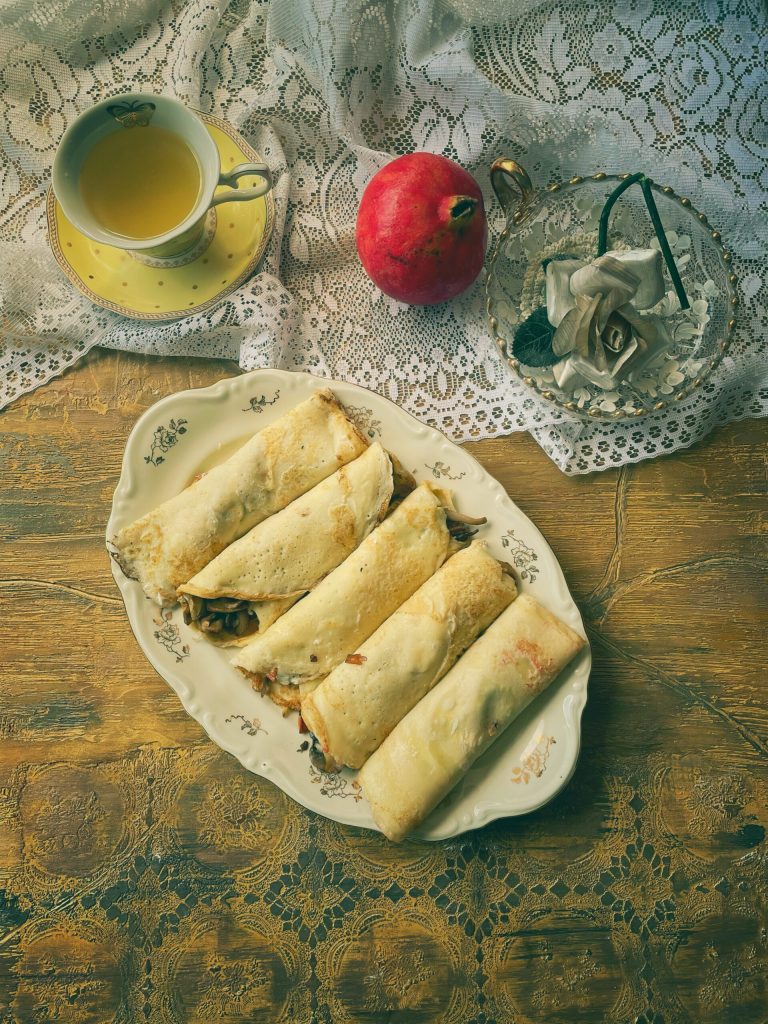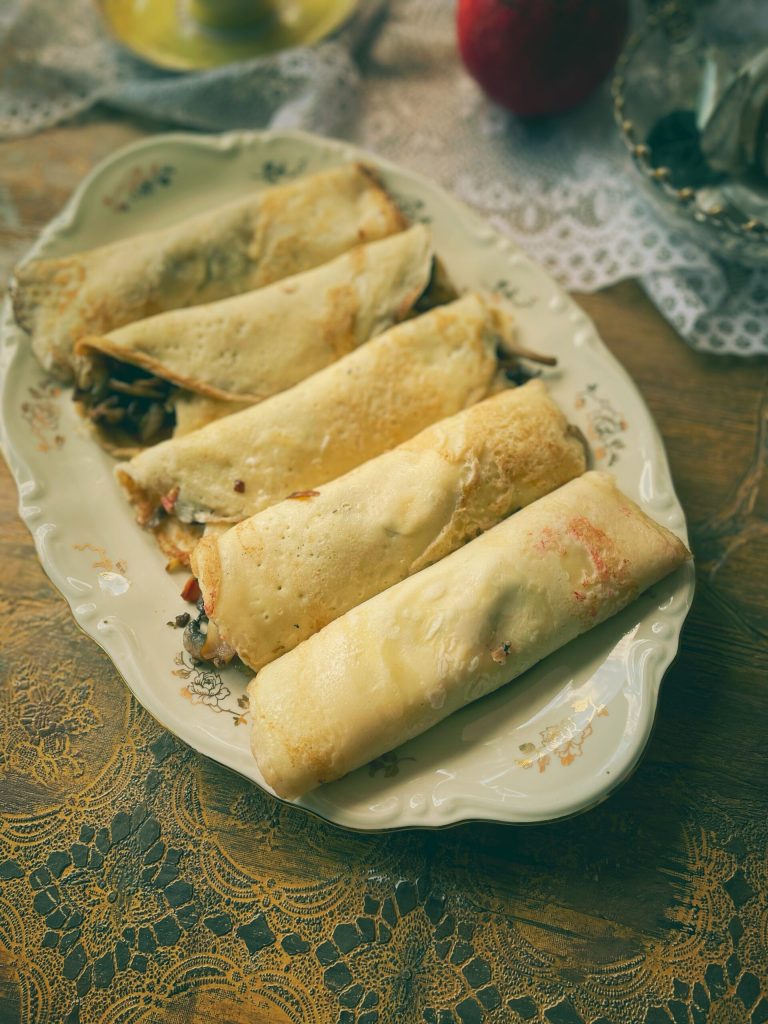Bliny are the sweets that best represent Maslenitsa, celebrated seven weeks before Easter for a total of seven days, which can be defined as the Russian Carnival, similar to crêpes, with the difference that they require leavening.
In the most authentic version, bliny are leavened. Note: bliný (блины) is the plural of blin (блин), made with a batter based on flour (often partly buckwheat), milk, eggs, butter, and yeast (usually fresh or active dry).
The yeast gives them a softer and spongier texture, very different from modern or simplified versions (which resemble crêpes and do not require leavening).
Leavened bliny were traditionally prepared with long leavening times, even several hours, especially for special occasions like Maslenitsa, also called “butter week.”
Orthodox religion prohibits the consumption of dairy, butter (in Russian máslo), and eggs during Lent, and Maslenitsa represents the last opportunity to enjoy these ingredients, both found in bliny.
Bliny are traditionally served with sour cream to accompany caviar or smoked salmon or salmon roe, or mushrooms, but they can also be eaten with jam or preserves (варенье), or with ricotta (творог).
The classic flour mix involves about 50/50 buckwheat flour and wheat flour, or 2/3 buckwheat and 1/3 regular wheat, to balance flavor and structure → this is the most authentic version, especially in rural Russian areas.
The use of regular wheat flour appeared later, now used to make bliny softer and suitable for sweet fillings too.
My version is both savory and sweet, with mushrooms and sour cream and with jam.

- Difficulty: Medium
- Cost: Inexpensive
- Rest time: 1 Hour
- Preparation time: 5 Minutes
- Portions: 15 Pieces
- Cooking methods: Stovetop
- Cuisine: Russian
- Seasonality: Carnival, All seasons
Ingredients
- 2 cups milk (warm)
- 2 eggs
- 0.5 oz fresh brewer's yeast (or 0.17 oz dry)
- 0.5 cup wheat flour
- 0.5 cup buckwheat flour
- 2 tbsps butter (melted)
- 1.25 cups sour cream
- 7 oz mushrooms
- 2 tbsps sugar
- to taste salt
- to taste jam (or preserves)
Tools
- 1 Pan 8/9 inches
Preparation
Dissolve the yeast in warm milk with the sugar and let it rest for 10 minutes.
In a large bowl, sift the flours.Gradually pour in the milk with the yeast, stirring.
Add the beaten eggs, melted butter, and finally the salt. Mix until a smooth batter is obtained.
Cover the bowl with a cloth and let it rise for about 1.5 hours in a warm place until the dough is puffy.
Heat a non-stick pan and brush with butter.
Pour a small ladle of batter and spread it in a thin layer. Cook on both sides until golden.For the savory version, sauté the thinly sliced mushrooms in a soffritto with onion. Fill the bliny with sour cream and mushrooms and roll them up.

For the sweet version, spread the jam and roll up.

Looking for a book about Russia? History of Russia
What is Maslenitsa?
Also known as Butter Lady, Butter Week, Crepe Week, or Cheesefare Week, Maslenitsa is an East Slavic religious and folk festival that retains numerous elements of Slavic mythology in its ritual.
It is celebrated during the last week before Great Lent, which is the eighth week before Eastern Orthodox Easter, equivalent to the Western Sexagesima.
The date of Maslenitsa changes every year, depending on the date of Easter celebration. It corresponds to the Western Christian Carnival, except that Orthodox Lent begins on Monday instead of Wednesday, and the Orthodox Easter date can vary significantly from the Western Christian date.
The traditional attributes of Maslenitsa celebrations are the effigy of Maslenitsa, sleigh rides, and festivities.
Russians cook bliny and unleavened bread, while Belarusians and Ukrainians cook pierogi and syrniki.
According to archaeological evidence from the 2nd century AD, Maslenitsa could be the oldest surviving Slavic holiday.
In Christian tradition, Maslenitsa is the last week before the start of Great Lent.
During Maslenitsa week, meat is already forbidden to Orthodox Christians, and it is the last week when eggs, milk, cheese, and other dairy products are allowed.
It is celebrated seven weeks before Easter for a total of seven days, and the last day of Maslenitsa coincides with Forgiveness Sunday (voskresen’ye proshcheniya).What drinks are usually consumed with bliny in Russia?
Typical Russian beverages paired with bliny:
Black tea (strong, without milk)
Kvass (a fermented drink made from rye bread)
In more festive settings, ice-cold vodkaIs the traditional version of bliny rolled up?
Yes, the traditional version of Russian bliny is thin and rollable, not like thick pancakes.
Even with a diameter of about 18 cm, the batter is spread thinly, almost like a crêpe.
Authentic bliny should be stretchy, soft, and thin, ideal for rolling or folding with sweet or savory fillings.
If they turn out thick and fluffy, they’re more like olad’i, which is another Russian and Ukrainian preparation similar to pancakes.
So yes, true bliny are thin, even if cooked in small pans. The key is in the amount of batter poured and how it is distributed.

